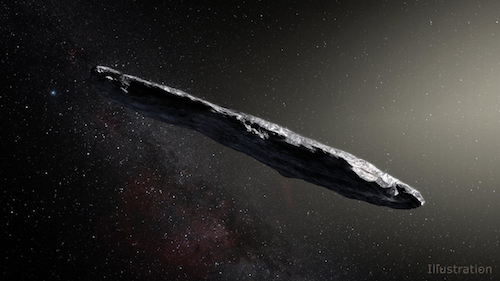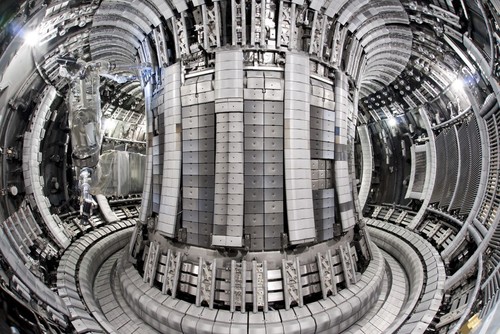CAN SF OFFER BETTER WAYS TO GET FROM HERE TO THERE?
/Over the recent holiday season my wife and I visited family in a large city, including lots of experience with public and private transportation. Subways, streetcars, buses, and hours in a private car over snow-and-traffic-clogged highways moving little or not at all. It made me wonder again why we still don’t have better ways of getting from place to place—faster and more convenient ways. Sure, there are lots of good things to be said about newer mass transit vehicles, given the challenges. But individual self-driving pods would be a lot nicer, and when I consider the four-hour and six-hour drives that separate us from some family members, a Star Trek transporter or Larry Niven’s stepping disks would be a godsend!
It’s often pointed out that, after nearly a century of imagining them, we still don’t have flying cars. Actually, some do exist but they’re hideously expensive prototypes that would still be revoltingly expensive in production, and none are really practical for the workday commute. More like a quirky toy for the private pilot who likes to keep his aircraft in his own garage.
At the other end of the cost scale are a lot of wacky personal street devices that mostly look like variations on a powered skateboard. Fun, maybe, but not terribly useful on a crowded sidewalk or a roadway with cars. Not to mention stairs! Check out this video.
A cool site called Technovelgy has collected transportation concepts proposed in dozens of works of science fiction. It’s revealing that almost all of them fall into a small number of basic categories: cars, flying belts, maglev transports, moving roadways, and teleportation.
Since the invention of the automobile we’ve been obsessed with personal vehicles—might as well call them cars—fast, often self-driving, sometimes self-levitating for a smoother and faster drive, very often able to fly, and once in a while even able to travel in time (who can ever forget Back to the Future’s DeLorean?) The self driving car is enticingly close to becoming practical, and could make a huge difference to urban commuting, if only by eliminating torrents of rage over every other driver’s utter incompetence! I enjoy driving, but I’d gladly give up the privilege in urban environments in exchange for knowing that none of the other vehicles was controlled by idiots. Again, flying cars would be great for long-distance travel but not worth sky-high prices to most people. And amphibious cars would be a treat for those of us who live on islands, but of no value to almost anyone else.
Of course, the terrific versatility of a flying belt (or rocket pack, or maybe the turbofan-powered Martin jetpack) is very appealing. Who doesn’t wish they could fly like a bird? Zip anywhere without waiting in line-ups or hunting for a parking space. But so far its physical manifestations have been lacking, with serious safety and distance limitations. Bad weather would be a pain, too. Given the impressive advances in drone technology due to improvements in battery tech, I can’t say that we’ll never get to a practical personal lifting device. Solving antigravity would do it, but I don’t think I’ll hold my breath for that just yet.
Magnetically-levitating trains, monorails, and personal transport pods already exist, providing much greater speeds than normal tracks. New proposals, like Elon Musk’s Hyperloop (in a vacuum tunnel to further enhance speed) and Tel Aviv’s SkyTran have promise. But development costs are terribly high, which means that governments rarely move ahead with them until conditions get truly desperate. And high-speed maglev transports are really only an advantage over longer distances, not for downtown urban traffic.
For the city dweller, moving sidewalks and roadways might be the answer if we could solve issues of inertia and momentum. We already have “human conveyor belts” in places like airports, but more than one speed is rarely offered. Even in the 1940’s Robert Heinlein described side-by-side “slideways” with velocities up to 100 miles per hour, but did he really think through what it would be like to step from the 60 mph belt to the 80 mph belt beside it? Without some kind of inertia-dampening field, spectacular face-plants would be the norm. And don’t suggest the pneumatic tube variation used in Futurama—an air lift tube might work as a strictly vertical elevator, but otherwise no thanks!
What about teleportation—the most versatile and convenient of all? As big a fan as I am of Star Trek, I have a hard time believing that its transporter technology will ever be possible. That a computing device could accurately locate and reproduce billions of atoms constantly in motion, including electrons in their shells of probability, seems unlikely. I actually consider it more likely (though admittedly not by much!) that a means might be found to warp and pierce space/time in such a way as to produce personal wormholes that would allow us to slip instantly from place to place. I like the idea, until I start to imagine the universe as Swiss cheese.
There is a fringe concept in cosmology proposing that at the quantum level of the zero point field lies an ultimate blueprint underlying the entire cosmos, describing the nature and location of everything. If it's true, and if we could ever decode that information and manipulate it, theoretically we could transform any kind of matter into any other kind. But, more to the point of this blog, we could change our own location coordinates and thereby reappear anywhere we wanted to be. We wouldn’t be travelling in any sense, we’d be altering the condition of the very universe, with ourselves in a different place and time than before. Instantaneous. Painless. Worry-free. (Although you’d have to know your destination with perfect precision and be able to harmlessly remove any matter already existing in that space, or trade places with it.)
Interesting refinements of the regular transportation modes crop up all the time (check out super-cavitating boats and city-wide zip lines in this Listverse article, plus solar-powered and magnetically-charged buses). But it would be cool to come up with something truly new—beyond the main categories—and be able to implement it within our lifetime. My saddle sore backside would thank you.







